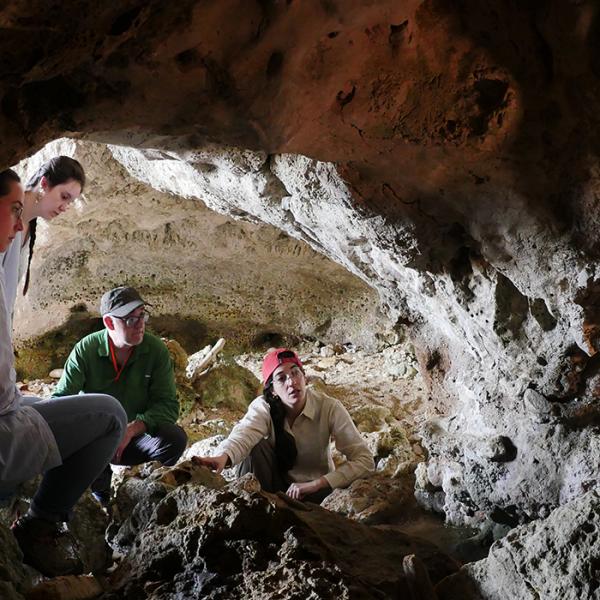The Living Earth Collaborative is headquartered at Washington University in St. Louis and partners with the Missouri Botanical Garden and Saint Louis Zoo to address concerns of biodiversity and ensure the preservation of earth's species. The Living Earth Collaborative encourages a multidisciplinary approach to investigate issues of biodiversity, recently announcing funding for nine new research initiatives centered on Ecuadorian species and habitats.
The Living Earth Collaborative is headquartered at Washington University in St. Louis and partners with the Missouri Botanical Garden and Saint Louis Zoo to address concerns of biodiversity and ensure the preservation of earth's species. The Living Earth Collaborative encourages a multidisciplinary approach to investigate issues of biodiversity, recently announcing funding for nine new research initiatives centered on Ecuadorian species and habitats.
Among those award, two projects are collaborations including Anthropology faculty, postdocs, and alumni.
Genetic Diversity of Peter’s Angola Colobus Monkey Populations in Northern Tanzania and in Accredited American Zoos
Monica McDonald, Saint Louis Zoo (Anthropology Alumna)
Emily Wroblewski, Washington University (Anthropology Faculty)
Pamela M. K. Cunneyworth, Colobus Conservation
The Angolan colobus monkey (Colobus angolensis) is a diverse species with seven recognized subspecies. Peter’s Angola colobus, C. a. palliatus, resides in isolated and highly fragmented areas of Kenya and Tanzania that are facing increasing human encroachment. There is debate whether Peter’s Angola colobus is actually a single subspecies or two distinct subspecies. Non-invasive fecal samples have been recently collected by the conservation organization Colobus Conservation from critical areas of Peter’s Angola colobus’ range. By combining the resources and expertise of the Saint Louis Zoo and Washington University in St. Louis, we will analyze DNA obtained from these samples. This work will resolve the subspecific status of Peter’s Angola colobus and identify wild populations with critical, vulnerable and unique diversity. This work will also enable better estimates of population size and more targeted approaches to conservation. We will further analyze samples from the United States captive population to resolve the wild origins of the founder animals and characterize how much of the diversity found within wild populations is represented in the United States captive population. This information can inform future management and breeding strategies for future management and breeding strategies for the captive population.
Integrating Stable Isotopes and DNA Metabarcoding of Cave Guano to Develop a Unique Paleoenvironmental Archive for the Humid Tropics
Xinyi Liu, Washigton University (Anthropology Faculty)
Christy Edwards, Missouri Botanical Garden
Rachel Reid, Washington University (Anthropology Post-doctoral Researcher)
J. Leighton Reid, Missouri Botanical Garden
Bronwen Konecky, Washington University (Earth and Planetary Sciences)
The goal of our project is to gain a better understanding of how vegetation coverage has changed over the last several thousand years in Costa Rica so that we can make more informed decisions about how to restore tropical forests and how to conserve biodiversity. We will do this by analyzing the contents and chemistry of modern and ancient bat guano, which preserves information about bat diet as well as the climate and environment the bats experienced. First, we will collect modern bat guano to characterize the diet of the insectivorous Parnell’s mustached bat (Pteronotus parnellii). We will examine DNA retained in the guano to identify the species of insects the bats consumed and isotope analyses to quantify the relative importance of those different species to bat diet. We will then collect samples from a vertical core taken from the guano layers accumulated over 3-5 thousand years and use our knowledge of modern bat diet to interpret ancient guano chemistry (carbon and nitrogen isotope values).
For more information on projects funded through Living Earth Collaborative, visit their website.


